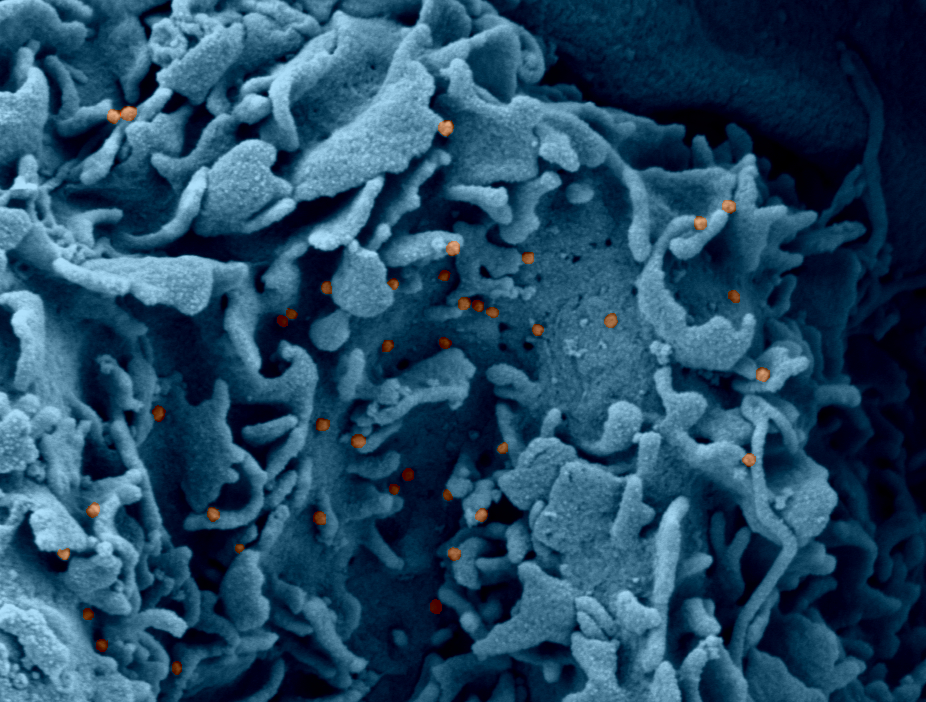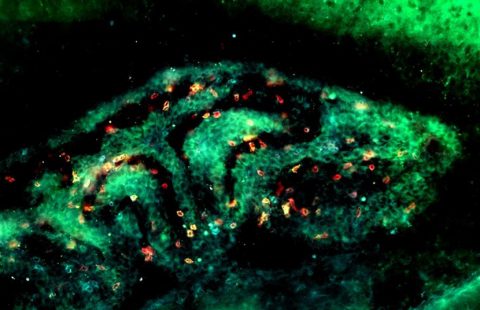Prior SARS-CoV-2 infection enhances and reshapes spike protein-specific memory induced by vaccination
Science Translational Medicine, mars 2023
Veronique Barateau1,*, Loic Peyrot1,*, Carla Saade1,*, Bruno Pozzetto1,6,*,Karen Brengel-Pesce3,*, Mad-Helenie Elsensohn4,5, Omran Allatif1, Nicolas Guibert2, Christelle Compagnon3, Natacha Mariano7, Julie Chaix7, Sophia Djebali1, Jean-Baptiste Fassier2, Bruno Lina1,8, Katia Lefsihane1, Maxime Espi1, Olivier Thaunat1, Jacqueline Marvel1, Manuel Rosa-Calatrava1, Andres Pizzorno1, Delphine Maucort-Boulch4,5, Laetitia Henaff1,9, Mitra Saadatian-Elahi1,9, Philippe Vanhems1,9, Stéphane Paul 1,6,$, Thierry Walzer1,$, Sophie Trouillet-Assant1,3,$, and Thierry Defrance1$.
1 CIRI – Centre International de Recherche en Infectiologie, Univ Lyon, Université Claude Bernard Lyon 1, Inserm, U1111, CNRS, UMR5308, ENS Lyon, Université Jean Monnet de Saint-Etienne, Lyon, 69007, France.
2 Occupational Health and Medicine Department, Hospices Civils de Lyon, Université Claude Bernard Lyon1, Ifsttar, UMRESTTE, UMR T_9405, Lyon University, Avenue Rockefeller, Lyon, 69008, France.
3 Joint Research Unit Civils Hospices of Lyon-bioMerieux, Civils Hospices of Lyon, Lyon Sud Hospital, Pierre-Benite, 69310, France
4 Hospices Civils de Lyon, Pôle Santé Publique, Service de Biostatistique et Bioinformatique, Lyon, 69003, France.
5 CNRS, UMR 5558, Laboratoire de Biométrie et Biologie Evolutive, Equipe Biostatistique-Santé, Villeurbanne, 69100, France.
6 Immunology laboratory, CIC1408, CHU Saint-Etienne, Saint-Etienne, 42055, France.
7 BIOASTER, 40 Avenue Tony 50 Garnier, Lyon, 69007, France
8 Virology laboratory, Institute of Infectious Agents, Laboratory associated with the National Reference Centre for Respiratory Viruses, Hospices Civils de Lyon, Lyon, 69317, France.
9 Service D’Hygiène, Epidémiologie, Infectiovigilance et Prévention, Hôpital Edouard Herriot, Hospices Civils de Lyon, Lyon, 69008, France


